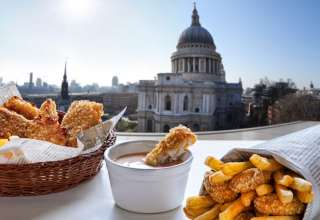[vc_row][vc_column][vc_column_text]
Château Taj Mahal anyone? Indian wine has a pretty dire reputation in the wine world, but it’s slowly improving, even though some of it is still largely undrinkable.

India has given the world much to be grateful for. The Taj Mahal, Gandhi’s legacy, yoga, cashmere, buttons, Snakes & Ladders, IT call centres…..
Ok , not the call centres. But undeniably one of the biggest gifts that India has granted the world is its delicious cuisine. And we Brits are amongst its greatest fans, with a higher proportion of curry houses per head of population here than anywhere else in the world – outside India.

But Indian wine? Nah, I’ll stick to the beer thanks. Which would be an entirely understandable response. However, think again.
India is producing more and more wine, and an increasing amount is being tailored to more western tastes. Typically, Indian wine is sweet and syrupy, almost cloying to our tastebuds.
But French drinks giant LVMH, makers of Moet & Chandon champagne have invested in a vineyard in the country to produce their Chandon sparkling wine. This is to appeal to the growing number of middle class Indians who are becoming wine drinkers, and a huge vote of confidence in the country’s wine making capacity– even though it is by a French conglomerate.
However, its presence, and the increasing number of wine drinkers in India will encourage other winemakers to follow suit, and hopefully the quality will follow.

One Indian wine, Krsma Estates’ Cabernet Sauvignon is selling for 30 quid a bottle in the US. Another wine produced by Sula Vineyards and called Jewel of Nasik, has been a bit of a surprise hit at Marks & Spencer. There is a Sauvignon Blanc, a Zinfandel rose and a Tempranillo Syrah in the range, which are all currently on offer at £42 for six bottles.
Not surprisingly, the subcontinent’s wines pair well with the country’s spicy food, with the hot climate producing ripe, fruit flavours and soft tannins.

The key wine making area is the Nasik region in the west of the country around 100 miles north east of Mumbai, widely known as India’s Napa Valley, which produces around 70% of all India’s wine. While this is a tropical region, the 2,200 ft altitude means that the vineyards are subject to warm days and cool nights, which are ideal for wine production.
Govinder Butter of Soul Tree Wines is marketing his wines – red, white and rose – at Indian restaurants as they increasingly branch out from basic curries to more adventurous cuisines.

Based in Solihull and working with a number of vineyards and growers in India, Soul Tree won a bronze medal at the International Wine Challenge for his 2015 Sauvignon Blanc – only the fourth Indian wine ever to win such a prize – and has seen its Zinfandel rose added to the wine list at Michelin-starred restaurant Purnells in Birmingham as well as a few hundred other curry houses in the UK.
So next time you’re in your local curry house, give the beer a miss, and try one of the Indian wines instead. You may be pleasantly surprised.
[/vc_column_text][/vc_column][/vc_row]







